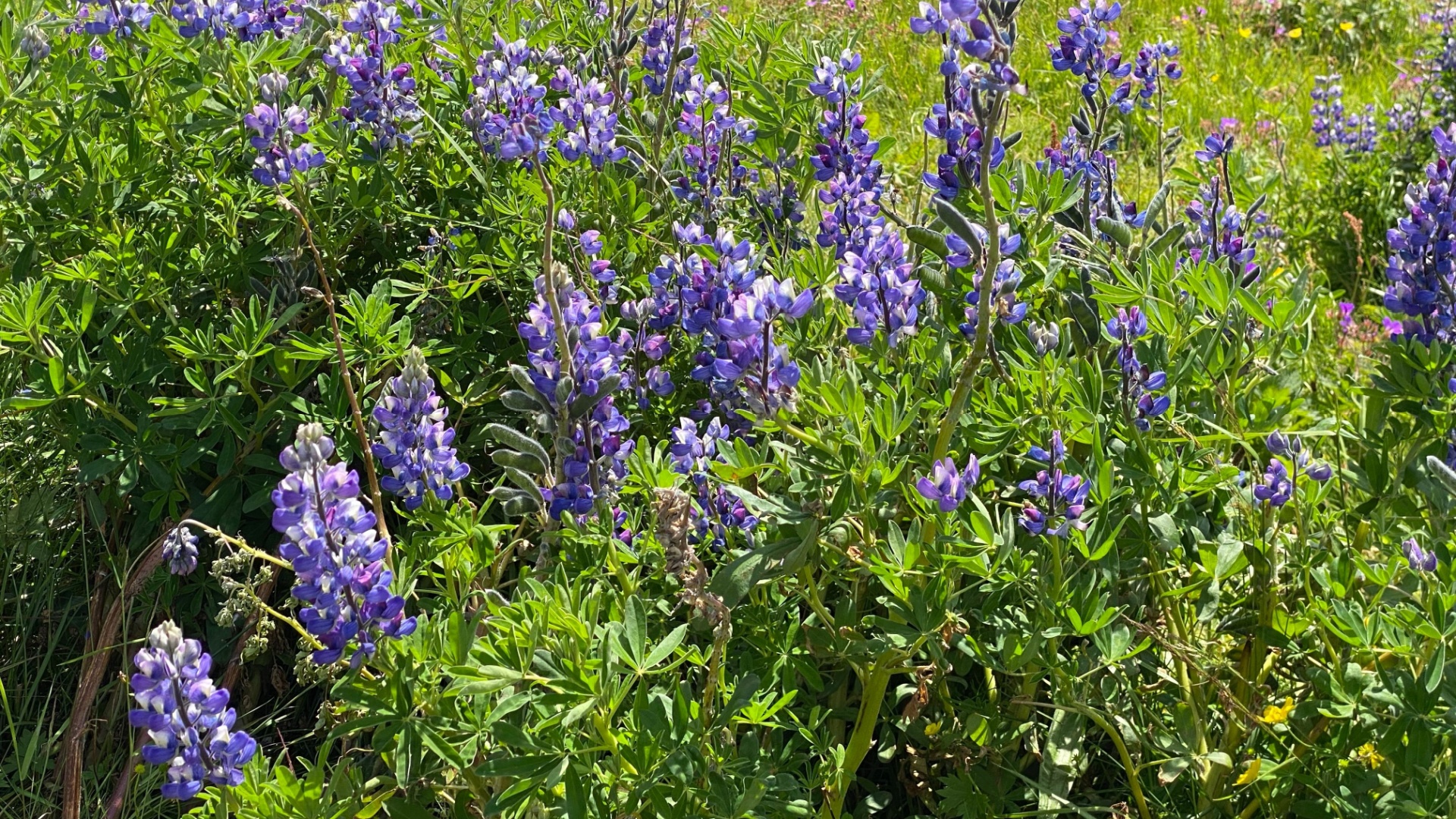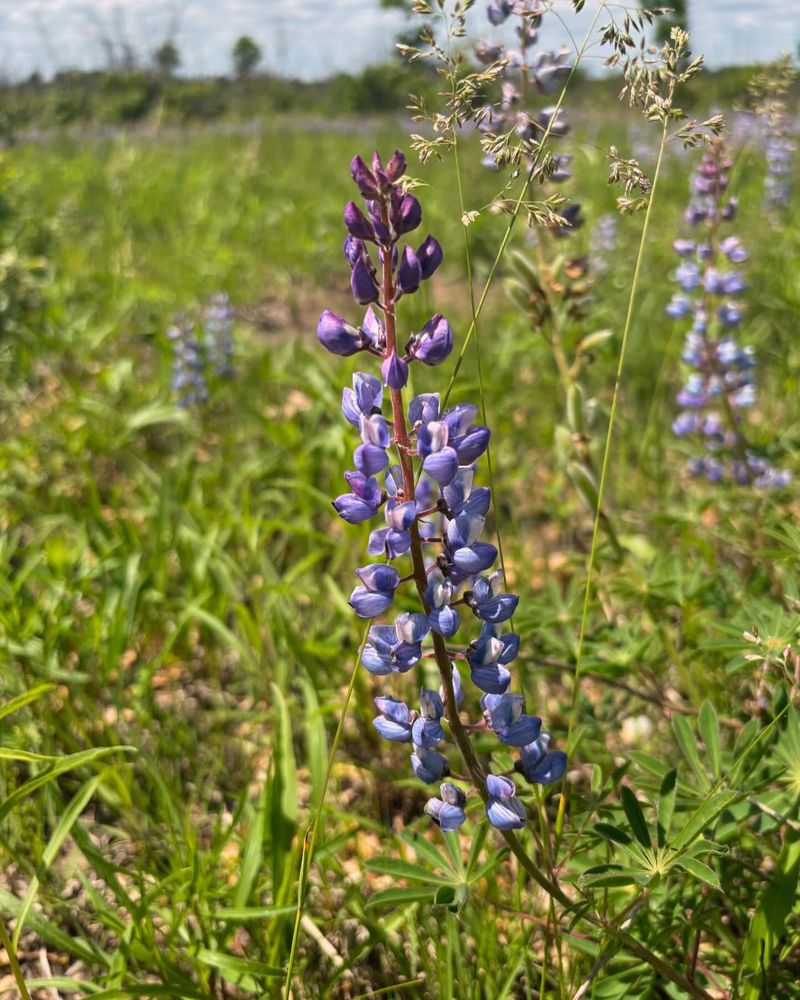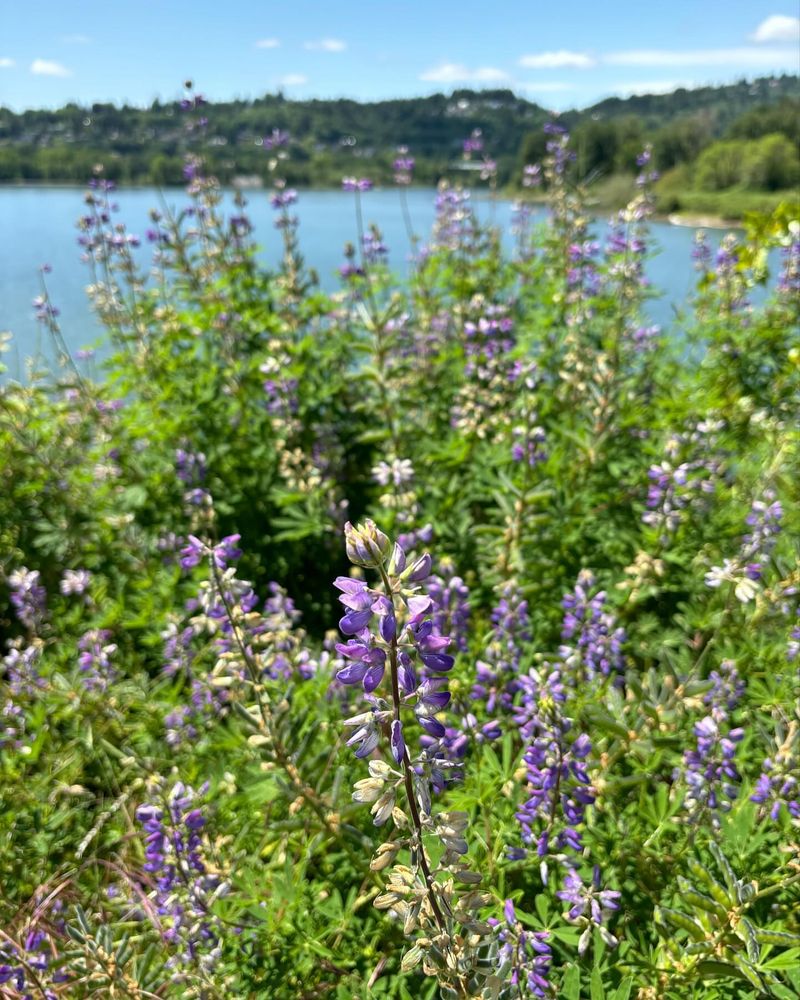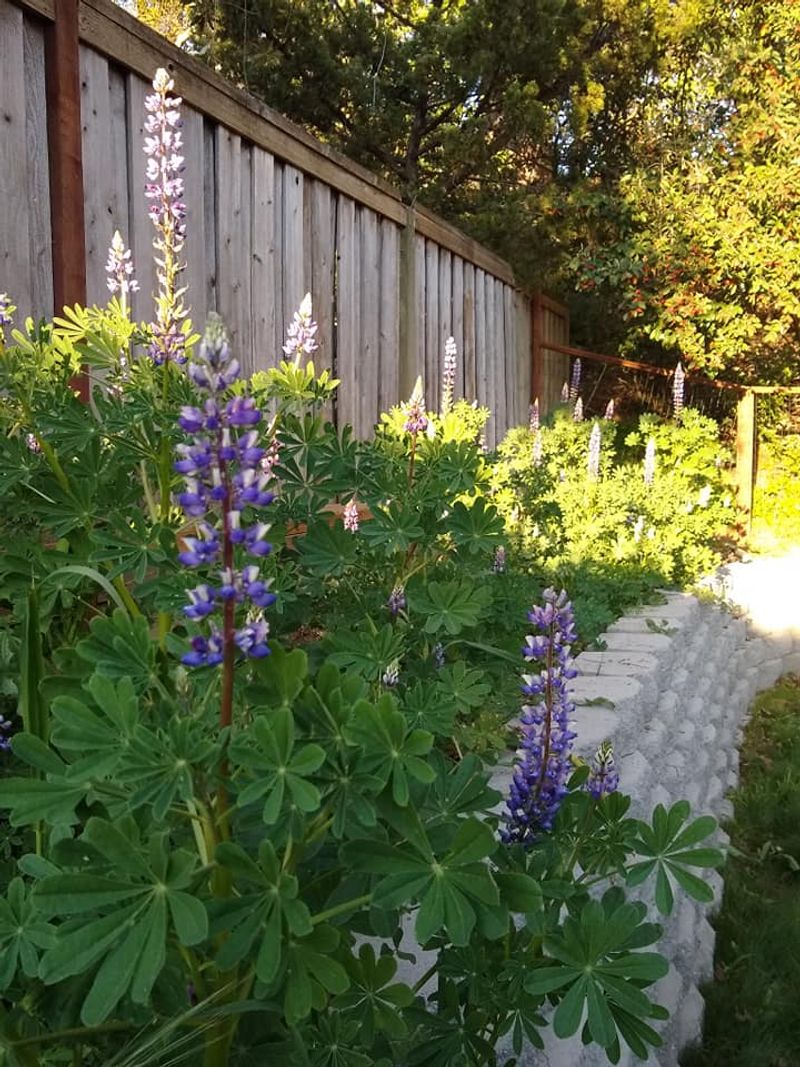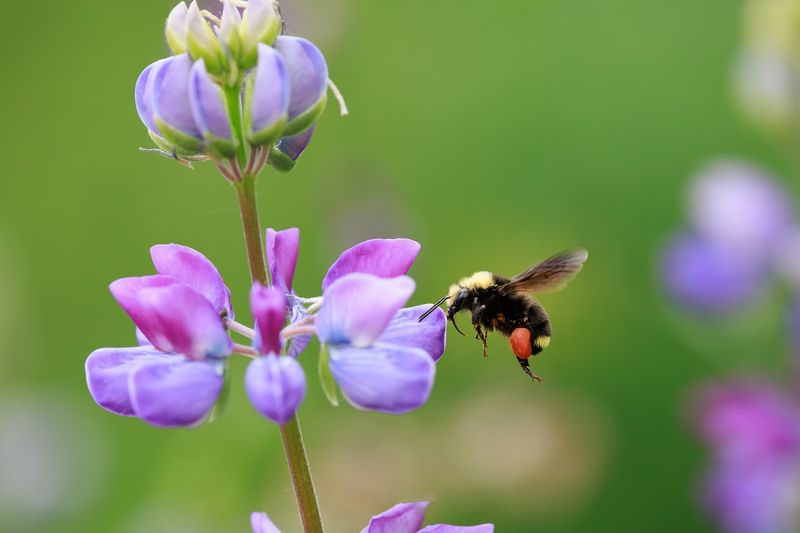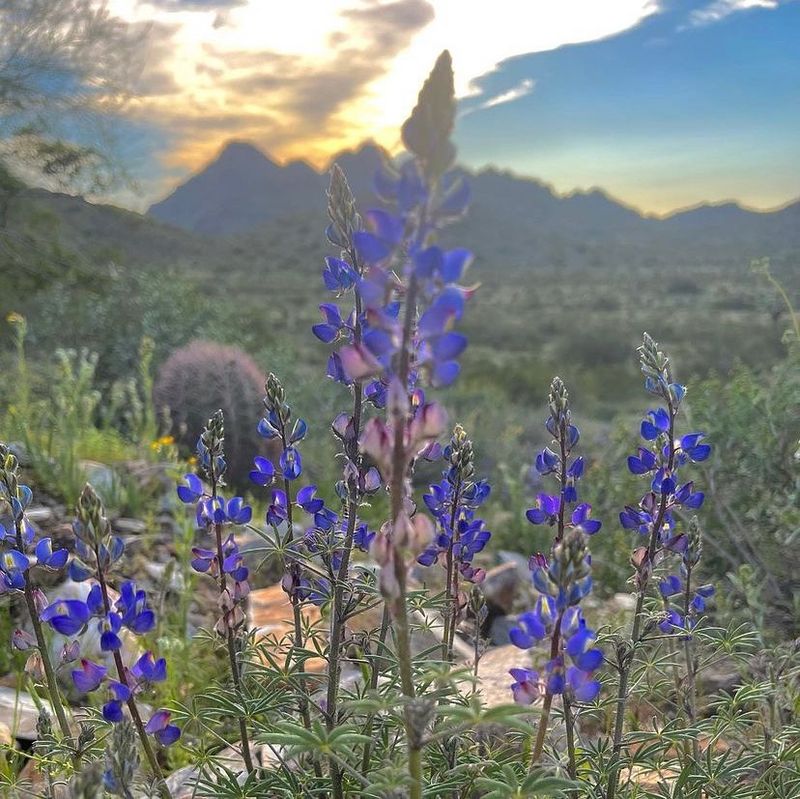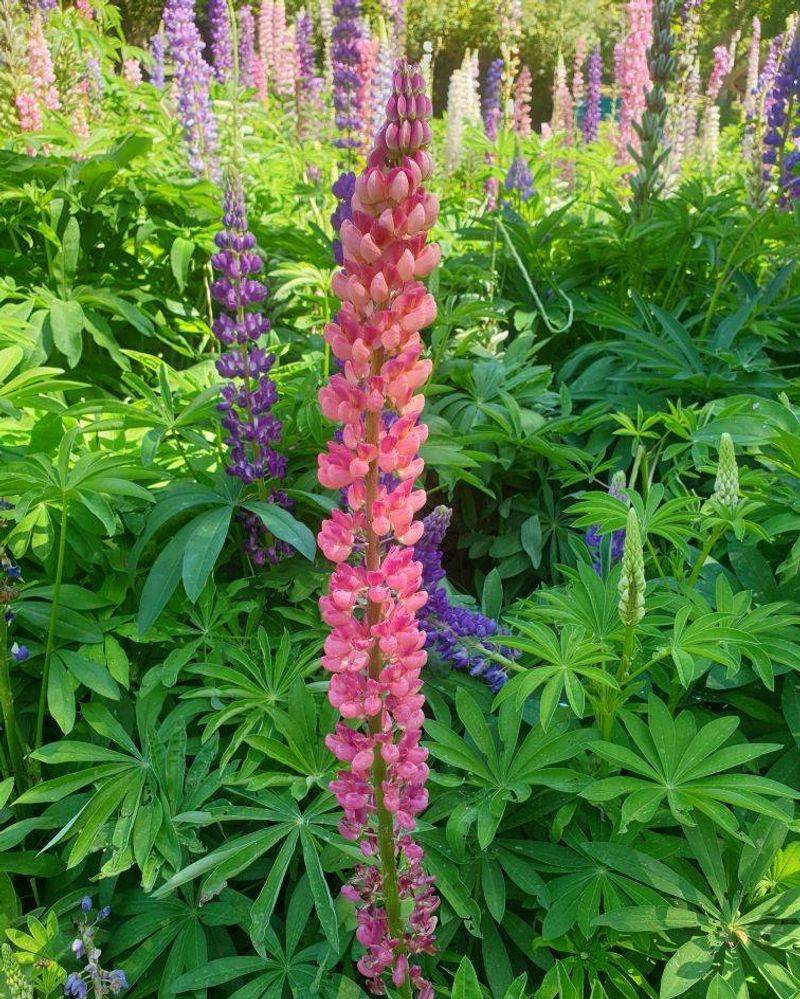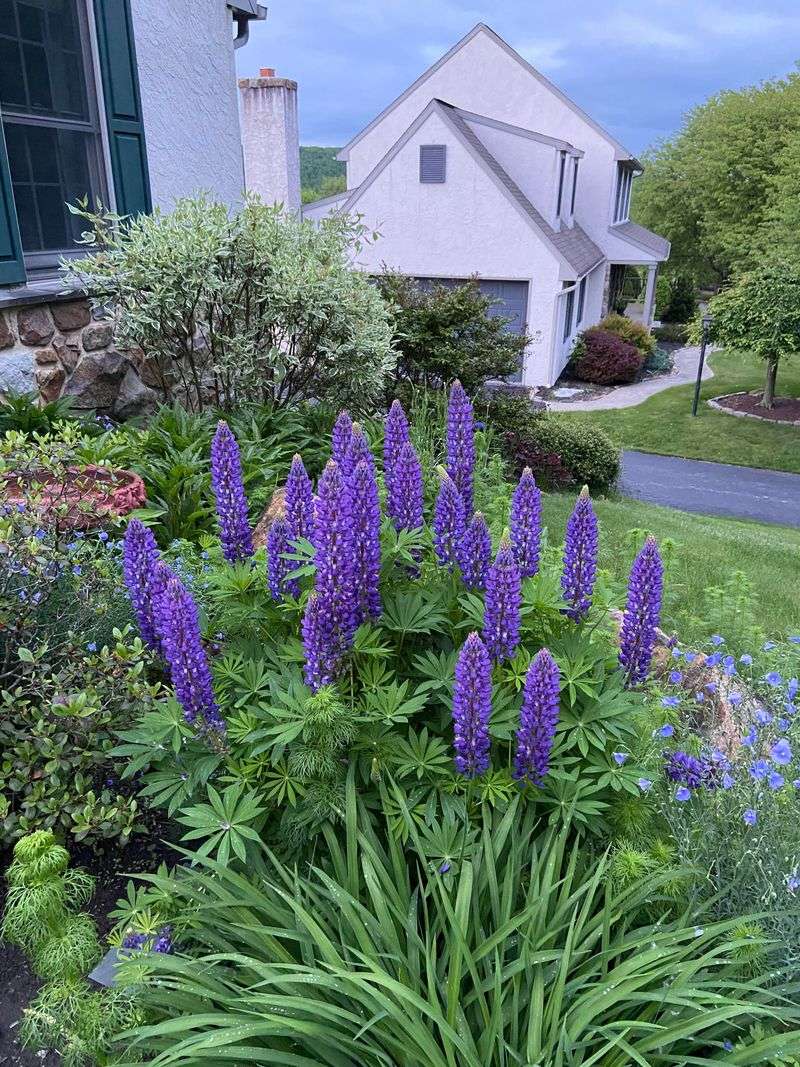Phoenix homeowners are transforming their thirsty lawns into vibrant lupine meadows that buzz with life. This shift isn’t just beautiful—it’s a smart response to our desert climate and declining pollinator populations.
Native lupine plants have deep roots in Arizona’s natural history and are now making a comeback in urban landscapes across the Valley.
1. Water Bills Shrink Dramatically
Traditional grass lawns in Phoenix gulp down thousands of gallons monthly, draining both water resources and wallets. Native lupine meadows, on the other hand, sip water conservatively once established. Many homeowners report water bill reductions of 60-70% after converting their yards.
Since lupines evolved in our desert climate, they thrive with minimal irrigation, making them perfect for Phoenix’s water conservation goals.
2. Butterflies Return to Urban Neighborhoods
Remember seeing butterflies everywhere as a kid? Their populations have crashed by 80% in some areas. Lupine meadows are changing this sad trend in Phoenix neighborhoods.
The vibrant purple blooms provide essential nectar while lupine leaves serve as critical habitat for butterfly eggs and caterpillars. Homeowners now report seeing species that had disappeared for decades, bringing fluttering color back to urban spaces.
3. Weekend Mowing Becomes Ancient History
Pushing a noisy, gas-guzzling mower in 110-degree heat isn’t anyone’s idea of fun. With lupine meadows, that sweaty weekend chore disappears completely! Native meadows require seasonal maintenance rather than weekly cutting.
Most homeowners spend just a few hours each spring and fall on simple trimming and reseeding. The time saved translates to more weekend relaxation and family activities instead of lawn maintenance.
4. Native Bees Make Surprising Comebacks
Arizona hosts over 1,300 native bee species—many now endangered due to habitat loss. Lupine meadows have become unexpected sanctuaries for these tiny essential workers. Unlike honeybees, our native bees evolved alongside lupines for thousands of years.
The relationship is so specific that some bee species can only raise their young on lupine pollen! Homeowners with lupine yards report seeing diverse native bees that had vanished from urban areas.
5. Phoenix’s Brutal Summer Heat Becomes Manageable
Grass lawns act like green concrete in summer, reflecting heat and creating what scientists call “heat islands” that make Phoenix even hotter. Lupine meadows work differently. Their deeper root systems cool surrounding soil while their varied heights create microclimates.
Temperature readings show lupine yards can be 8-15 degrees cooler than grass lawns during summer afternoons! This natural cooling effect reduces air conditioning costs and makes outdoor spaces usable even in July.
6. Kids Connect With Nature Right at Home
In our digital world, children spend less time outdoors than any previous generation. Lupine meadows create fascinating natural laboratories right in the front yard. Parents report their kids voluntarily put down devices to watch caterpillars transform, identify butterflies, or observe hummingbirds darting between flowers.
Schools are even creating lupine gardens as outdoor classrooms where science comes alive through direct observation rather than textbooks.
7. Property Values Get Unexpected Boosts
Real estate agents initially worried that removing lawns would hurt home values. The opposite has happened! Phoenix homes with established native lupine landscapes now command premium prices. The combination of lower maintenance costs, reduced water bills, and stunning purple blooms creates strong market appeal.
Several Phoenix neighborhoods have formed “Lupine Corridors” where connecting yards create pollinator highways, further increasing community desirability and property values throughout entire blocks.

